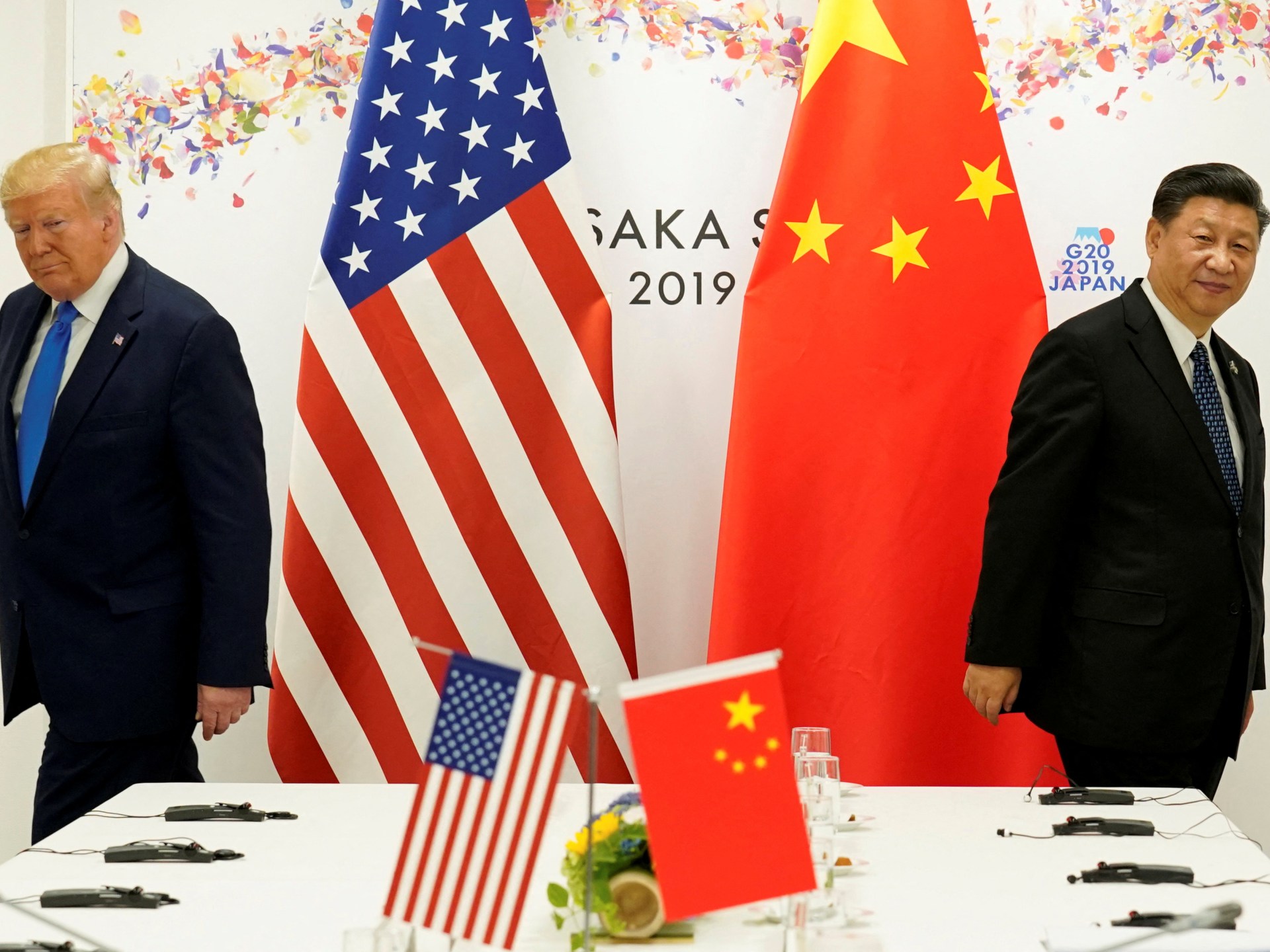Taipei, Taiwan – As United States President Donald Trump plays up the prospects of a trade deal with China, experts say Beijing is unlikely to make the first move and may even demand preconditions before coming to the negotiating table.
Trump has said he expects to see his 145 percent tariff on China “come down substantially” but that a lower rate would depend on Beijing’s next steps.
“We’re going to have a fair deal with China,” Trump told reporters on Wednesday in his latest remarks, stirring hopes of a de-escalation in tensions between the sides.
But given the high stakes in its standoff with the US, China “can’t afford to be the side that makes the first move because it can’t be viewed as capitulating to the Trump administration’s pressure campaign”, William Yang, a senior analyst on Northeast Asia at the International Crisis Group, told Al Jazeera.
“As a result, China will firmly uphold its current position until it sees the US government make some credible concessions that can allow Beijing to consider coming to the negotiating table and claim victory.”
Beijing may even see Trump’s more optimistic rhetoric as a sign that “digging in its heels” is working, Yang said.
US and Chinese officials have not formally announced the start of trade negotiations, though Trump said on Wednesday that his administration was “actively” negotiating with the Chinese side, without elaborating.
On Thursday, China’s Ministry of Commerce rebuffed Trump’s remarks, saying there were no talks on trade taking place between the sides.
“Any claims about the progress of China-US economic and trade negotiations are groundless and have no factual basis,” ministry spokesman He Yadong told a news conference.
China has said the door is “wide open” to talks but insisted it will not shirk from a fight with the US if necessary.
In contrast to Trump’s off-the-cuff remarks and vacillating statements on the possibility of relief from his tariffs, Beijing’s messaging, which has been largely communicated through the Ministry of Commerce and the Ministry of Foreign Affairs, has been tightly controlled and consistent.
“I would say that, at least on the surface, China has the upper hand,” Zhiwu Chen, a professor of finance at the University of Hong Kong’s Business School, told Al Jazeera.
“It’s more in control, whereas President Trump and Secretary Bessent have been signalling and doing things that further help to weaken their hand,” Chen said, referring to US Treasury Secretary Scott Bessent.
“I think the statement really shows he is anxious and panicking, whereas China has been pretty quiet and muted,” Chen added, referring to Trump’s comments that he intends to lower his tariffs at some point.
China has slapped US exports with a 125 percent tariff in response to Trump’s trade salvoes, as well as announcing various other “countermeasures”, including restrictions on rare earth exports and limits on the number of Hollywood film releases in China.
If tensions continue to escalate, Beijing could potentially halt cooperation on issues like controlling fentanyl exports.
In theory, it could also inflict pain on the US economy by dumping its more than $760bn in US government debt – a move that economists view as unlikely given that it would have serious ramifications for the Chinese economy as well.
Unlike Trump, who prefers to negotiate face-to-face with world leaders, Beijing will want to engage in preliminary meetings before any meeting between Chinese President Xi Jinping and the US president, said Tom Nunlist, an associate director of tech and data policy at Trivium China.
“They will be looking to have secured a deal before the top leaders meet to confirm it. To reach out to Trump directly may look like Xi is caving to US pressure, and it also risks failure,” Nunlist told Al Jazeera.
“Generally speaking, the US is the aggressor here, and China has calibrated its response to be forceful but avoid escalation,” Nunlist said.
It is likely that discussions would address a wider array of concerns than just tariffs, according to analysts, especially now that Trump appears to have blinked first in the standoff.
Potential areas for concessions include “tech export controls and Taiwan”, according to Dingli Shen, a Shanghai-based international relations scholar.
“Longstanding grievances about how China is treated within the global system” could be on the table, according to Marina Zhang, an associate professor at the University of Technology Sydney’s Australia-China Relations Institute.
“In practice, it means no public humiliation, no unilateral ultimatums, and no compromises on four key ‘red lines’: Issues related to Taiwan, democracy and human rights, China’s political system, and its right to development,” Zhang told Al Jazeera.
Zhang said US export controls on critical technology could be on the agenda, as well as the blacklisting of Chinese tech companies such as Huawei and Chinese chipmaker SMIC.
“China may also push for the relaxation of investment screening rules, particularly in sensitive sectors like semiconductors, clean energy, and advanced manufacturing. Another likely ask is a degree of de-escalation over Taiwan,” she said.
“While Beijing does not expect full concessions, it would welcome less overt political signalling from Washington – such as limits on high-level official visits and arms sales.”
For Beijing, the wait could be worthwhile if it means achieving some of its longer-term goals, said the International Crisis Group’s Yang.
“This is more than a pure trade negotiation for China at this point. It views the trajectory of this tariff standoff as a precursor to how bilateral relations with the US will develop over the next four years,” he said.
“Beijing will want to see the Trump administration make the first move to reduce the tariffs imposed on imported Chinese products. The level of potential tariff reduction could potentially determine the Chinese government’s willingness to start high-level trade negotiation with the Trump administration.”
